Weekly Awesomeness Round-up – 8/22/2011
- By Faith Tucker
- August 22, 2011
- 2 Comments
Hubble won our hearts by producing breathtaking images of galactic collisions, clusters of stars and supernova remnants (among many other things). Now the James Webb Space Telescope, Hubble’s next generation successor, is planning to once more furnish an unprecedented look into the Universe around us. Take a look at this sneak peak of what scientists expect to see with our new set of “eyes.”
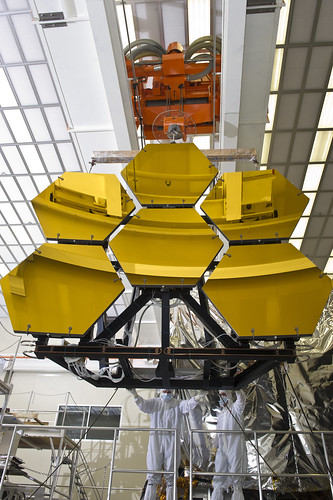
The first six complete mirrors of the James Webb Space Telescope earlier this summer, Credit: NASA Webb Telescope
We’ve been watching for decades as Coronal Mass Ejections (CMEs) burst off the surface of the Sun, occasionally with courses directed toward the Earth. But this head-on view limits our ability to understand how CMEs develop while en route. However, NASA’s STEREO spacecraft are changing that. This duo has utilized their respective perches, each more than 65 million miles away from Earth, and directed their gaze back toward Earth to watch a CME on its journey from the Sun to the Earth; and the result is changing the way we understand and forecast space weather.
The internet has recently produced a volley extraordinary claims of varying veracity regarding a particular vagrant comet. But rest assured that the vexing reports of impending doom via Comet Elenin are not valid. This slushy ball of ice and dust will be swinging around the Sun as part of its highly elliptical orbit this fall, making its closest approach to Earth on October 16th – “close” being a relative term as Come Elenin will still be over 90 times farther away than the Moon. Look here to read NASA scientists’ answers to some common Elenin questions.
The Allen Telescope Array in northern California had to shut its doors (or eyes, as the case may be) early this year due to public funding cuts, but enthusiastic donors have rallied together to raise the necessary funding to bring life back to this radio telescope. And life, it turns out, is exactly what the Allen Telescope Array will now be able to continue searching for as it monitors the radio sky in hopes of clues to what (or who) else is out there. The facility is operated by the Search for Extraterrestrial Intelligence Institute (or the SETI Institute) and allegedly benefitted from donations from the likes of Apollo 8 astronaut Bill Anders and Contact actress Jodie Foster.
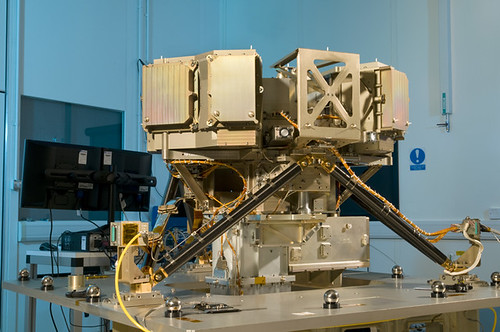
The MIRI instrument, Credit: NASA Webb Telescope
Yet another milestone has been checked off the list by the James Webb Space Telescope folks as the Mid-Infrared Instrument completed its cryogenic testing to make sure it can survive the brutally cold environment in space. MIRI will help scientists look at incredibly distant objects whose light has been shifted into the infrared part of the electromagnetic spectrum by the expansion of the Universe. It will also be able to penetrate into planetary systems that are enshrouded by dust.
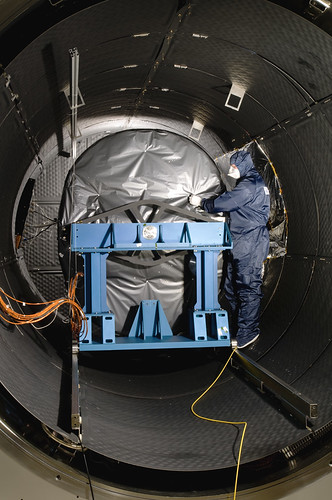
The MIRI instrument undergoing environmental testing in a vacuum chamber
Credit: NASA Webb Telescope
In a couple billion years our Sun will come to a relatively peaceful end as a planetary nebula, its outer layers gently expanding away from the leftover core. Although this stellar death might not bode well for life on Earth, at least it will leave behind a beautiful remnant much like this planetary nebula imaged by Hubble earlier this summer. Dubbed the “Necklace Nebula” for its diamond necklace-like appearance, this planetary nebula measures 12 trillion miles in diameter and resides 15,000 light years away in the constellation Sagitta.
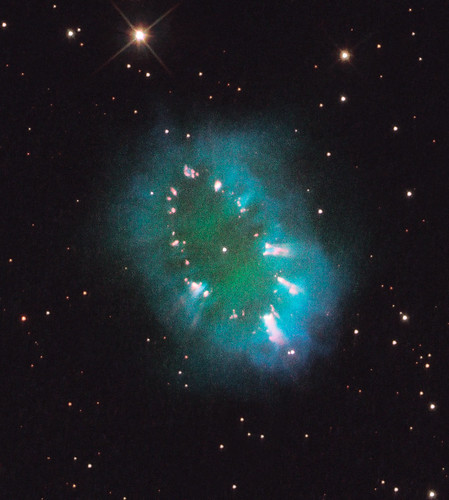
The beautiful “Necklace Nebula”
Credit: NASA, ESA, and the Hubble Heritage Team (STScI/AURA)
And don’t forget this week’s “Caption This”:
Winning caption: “Supporters of the Desert Energy Atomic Testing Hatch would have been wise to spell out its initials before ever allowing live viewings.” (Adam, from Philadelphia), photo credit: NASA Goddard, courtesy Mrs. Esther Goddard
Check out next week’s image!


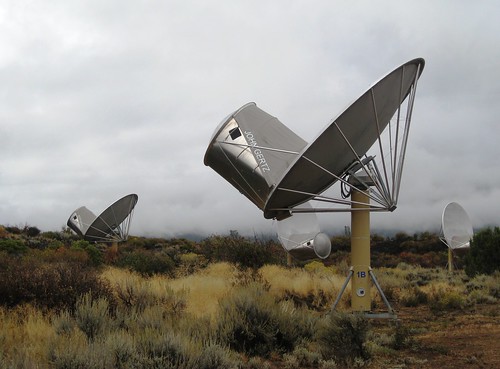
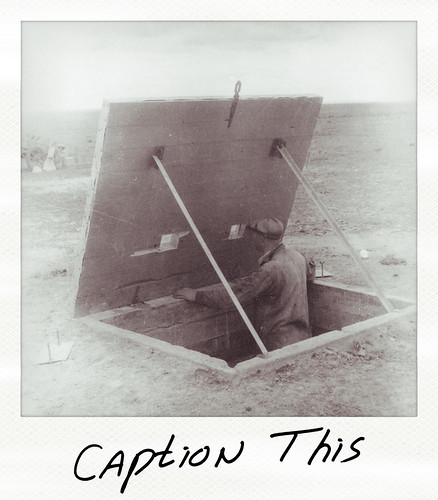

Hello, I would like to see David Morrison’s excellent video on its own web page so I can refer people inquiring directly to it. I would also suggest putting it together with all the FAQs provided by Don Yeomans. Thank you so much. Charles Bell
H47 Vicksburg
Charles – You can visit the video directly at the NASA Multimedia Gallery.
Unfortunately, we just round up the links and don’t handle the original sites, so while putting the two together makes sense, it’s not something we can do!